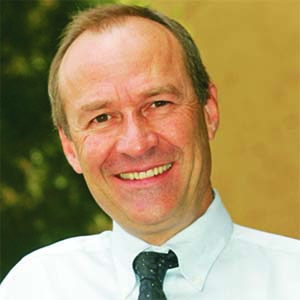Today’s 1,6 litre 90-degree V6 turbo hybrid Formula One engines set the standard for power, efficiency and complexity in the modern era. They represent the ultimate design evolution of a concept that was born before the very first World Championship F1 race on 13 May 1950.
 By Graham Duxbury
By Graham Duxbury
F1 engine rules first written in 1947 dictated that cars should be powered by a naturally aspirated engine of 4,5 litres in capacity, or a 1,5 litre forced-induction engine. The belief was that both engine specifications would produce comparable power outputs.
For the engine designers at the time “forced induction” meant supercharging – compressing the incoming gases via a special pump driven by the engine.
The Alfa Romeo team were masters of this design concept and their fast Type 158 with its two-stage supercharged engine was the most successful car, winning world championships for its drivers Giuseppe Farina and Juan Manuel Fangio in 1950 and 1951.
But then the rules changed, effectively outlawing supercharging. F1 fans had to wait until 1966 for the reintroduction of forced-induction engines to the sport. Again, two engine specification options were mandated by the rule-makers; 3-litres naturally aspirated or 1,5 litres supercharged.
Engine builders of the era were convinced that the route to take was the 3-litre option, believing no small-capacity supercharged engine would be able to compete on an equal footing. This view held sway for nearly a decade, until the engineers at Renault set out to disprove conventional wisdom.
They entered the 1977 British Grand Prix with a car – the Renault RS01 – powered by a V6 1,5-litre turbocharged engine. The engineers staked their credibility on their conviction that turbocharging – not supercharging – presented better opportunities for success.
Unlike supercharging, turbo engines use the energy of the exhaust gasses to drive a small turbine which, in turn, drives a pressure-boosting pump in the induction system.
Initially, the Renault engineers weren’t well served by their fledging turbo power plant which proved to be highly unreliable and became the butt of jokes in the paddock. The Renault failed to finish any of its races. Many retirements were caused by spectacular engine blow-ups.
The tide gradually turned, however, and the pioneering Renault finished the 1978 American GP in a credible fourth place and earned its first F1 points.
Perhaps fittingly, Renault’s first win came at the 1979 French GP where a front-row qualifying performance turned into a historic win for a turbocharged F1 car. It was piloted by Frenchman Jean-Pierre Jabouille.
The writing was on the wall. Turbocharging was the way to go. It wasn’t long before Ferrari and BMW made turbocharged F1 engines. They were followed by Alfa Romeo, Honda, Porsche, Ford and others. By mid-1985 every team was turbo powered.
Soon power figures reached unprecedented levels. With boost pressures turned to maximum, special qualifying engines – good for only a handful of laps before they exploded – were delivering around 1500 horsepower. Teams were using upwards of 35-40 engines per year, replacing them almost after every run.
Things had to change. The governing body – the Federation Internationale de l’Automobile –– stepped in and enforced power-reducing rules that would throttle the engines in a bid to keep a lid on the so-called “arms race”.
First, boost pressure was limited to four bar in 1987 and then slashed to 2,5 bar in 1988. Nevertheless, despite the FIA’s best efforts, turbo engines continued to dominate the races as engineers continued to develop their power plants.
Unable to halt this run-away development trend, turbochargers were banned by the FIA for the 1989 season leaving the teams with only a naturally-aspirated engine option – with a capacity raised to 3,5 litres.
F1 fans had another long wait for the return of turbocharged engines, which made their appearance again in 2014, integrated into a tightly-specified rules package.
Today, the turbocharged internal combustion engine is complemented by a complex electric hybrid system featuring multiple energy recovery sources and managed by modern, high-tech computer systems.
Exactly 160hp of electrical energy is delivered each lap, complementing the power produced by the turbocharged engine which is strictly governed by fuel flow limits and other restrictions.
Currently Mercedes-Benz and Ferrari power plants are accepted as the most powerful with close to 900hp available with a fully-charged hybrid system.
Sadly, these muted engines have lost the thrilling “scream” of the V8, V10 or 12-cylinder F1 engines of bygone years. The reason, as engineers readily explain, is that noise is actually the product of wasted energy.
Today’s engines waste very little and are, by some considerable margin, the most fuel-efficient F1 engines in history.
